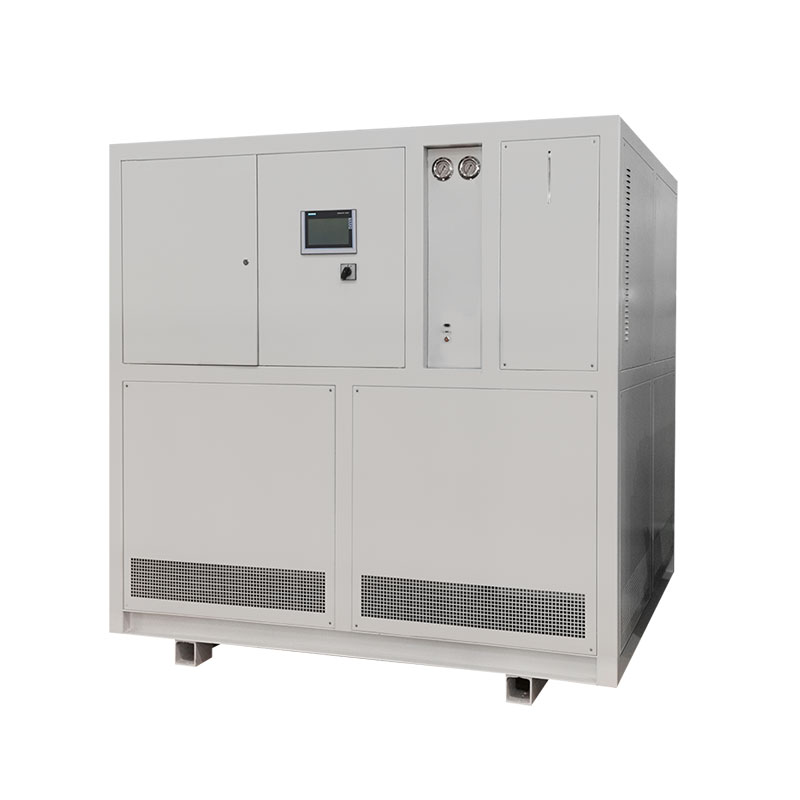industrial glycol chiller system
Industrial Glycol Chiller Systems: Advanced Cooling for Diverse Applications
Industrial glycol chiller systems are engineered to provide precise and reliable temperature control across a spectrum of commercial and industrial applications. These systems utilize glycol, a type of antifreeze, to maintain a consistent cooling temperature, even in environments where the water’s freezing point could be a limitation.

Composition and Functioning
Glycol chillers operate by mixing glycol, either ethylene or propylene, with water to create a solution that lowers the overall freezing point of the mixture. This allows the chiller to function effectively in colder climates or applications that require temperatures below the freezing point of water. The glycol solution is circulated through a heat exchanger, where it absorbs heat from the process or space being cooled, and then returns to the chiller to be re-chilled。
Types of Glycol Used
The two primary types of glycol used in industrial chillers are:
Ethylene Glycol: Known for its efficient heat transfer and antifreeze properties but is toxic.
Propylene Glycol: A non-toxic alternative to ethylene glycol, suitable for applications in the food and beverage industry。
Advantages of Glycol Chillers
Glycol chillers offer several advantages, such as:

Lower Freezing Point: The glycol mixture can operate at temperatures significantly below the freezing point of water.
Heat Transfer Efficiency: Glycol has good thermal conductivity, which aids in rapid cooling.
Corrosion Resistance: Certain glycol formulations can help prevent corrosion in the cooling system components.
Environmental Compliance: Propylene glycol, in particular, is more environmentally friendly and biodegradable。
Applications
Glycol chillers are used in a variety of applications, including:
HVAC Systems: Providing cooling in large commercial buildings, especially in cold regions.
Food and Beverage Processing: Maintaining optimal temperatures for product storage and processing.
Chemical and Pharmaceutical Industries: Cooling in manufacturing processes and laboratory environments。
Selection and Maintenance
When selecting an industrial glycol chiller system, consider factors such as:
Cooling Capacity: Ensure the system can meet the cooling demand of the application.
Type of Glycol: Choose based on the specific application and safety requirements.
Mixture Ratio: Calculate the proper ratio of glycol to water based on the lowest operating temperature.
Energy Efficiency: Look for systems with high Energy Efficiency Ratios (EERs) to reduce operational costs。
Environmental and Safety Considerations
Given the toxic nature of ethylene glycol, it requires careful handling, storage, and disposal. Propylene glycol is often preferred for its safety profile, particularly in applications where accidental exposure is possible。

Conclusion
Industrial glycol chiller systems offer a versatile and efficient method for achieving low-temperature cooling in various applications. Their ability to maintain low operating temperatures and efficiently transfer heat makes them invaluable in many industries. By carefully selecting the system components and glycol type, users can ensure optimal performance and reliability while minimizing environmental impact。
This article provides a comprehensive guide to industrial glycol chiller systems, discussing their composition, advantages, applications, and selection guidelines. It emphasizes the importance of using the correct glycol type and mixture ratio for optimal system performance and efficiency, ensuring readers can make informed decisions for their cooling system requirements.
Related recommendations
temperature control machine
588Temperature Control Machines: Ensuring Precision in Diverse Applications Temperature control machines are critical in a wide array of applications, from industrial processes to scientific resea...
View detailsWhat is the condensation pressure control method for refrigeration chiller?
1296What is the condensation pressure control method for refrigeration chiller? The basic idea of regulating and controlling the condensation pressure from the refrigerant side is to accumu...
View detailstemperature control heating and cooling
575Temperature Control for Heating and Cooling: A Comprehensive Guide IntroductionTemperature control systems for heating and cooling are vital in maintaining optimal conditions across various env...
View details50 ton water cooled chiller
421Understanding 50 Ton Water-Cooled Chillers: An In-Depth Analysis Introduction to 50 Ton Water-Cooled Chillers A 50-ton water-cooled chiller is a significant component in the HVAC industry, d...
View details
 LNEYA Chiller
LNEYA Chiller






HelloPlease log in